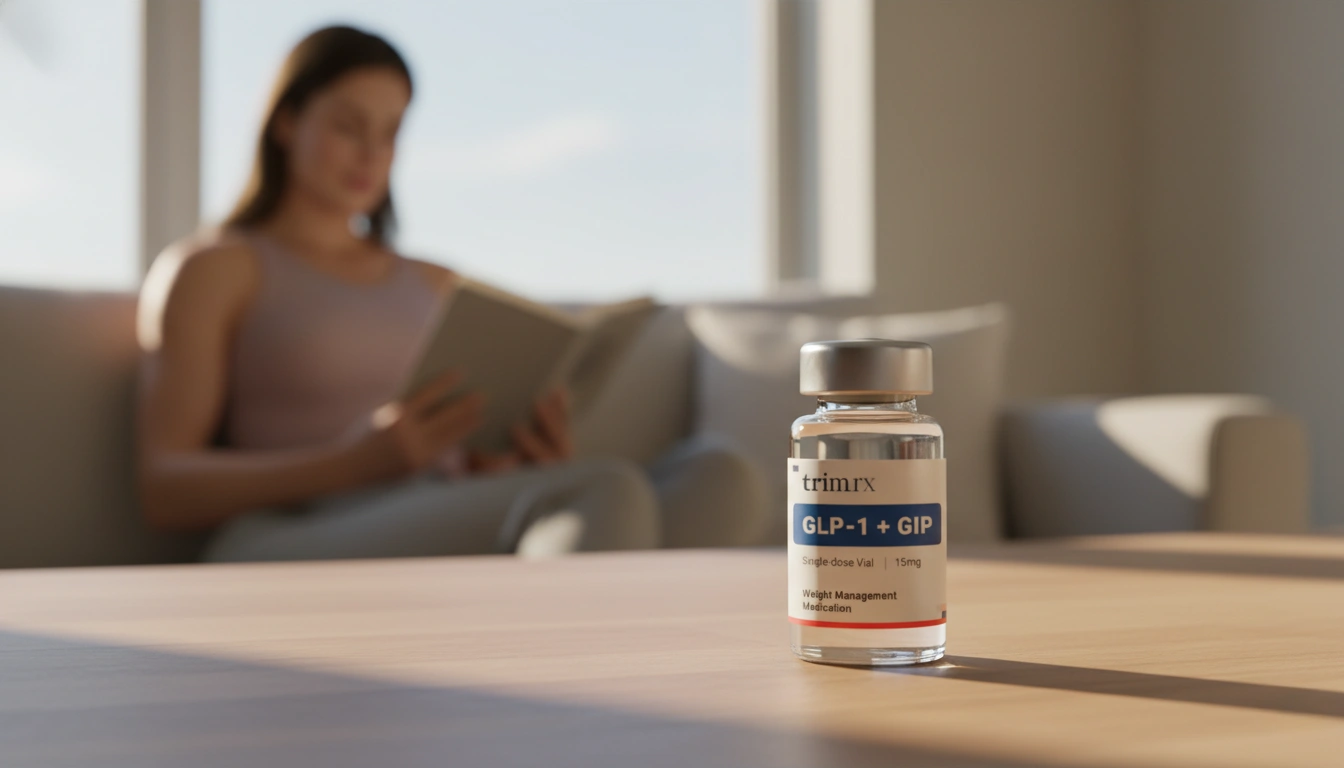How to Make GLP-1: Boosting Your Body’s Natural Hormone for Weight Management

Introduction
Did you know that the balance of hormones in your body can significantly influence your weight and overall health? One hormone that has gained considerable attention recently is glucagon-like peptide-1 (GLP-1). This naturally occurring hormone plays a pivotal role in regulating appetite, blood sugar levels, and even weight loss. With the rise of GLP-1 medications like Ozempic and Wegovy, many are curious about how to naturally increase their body’s production of this essential hormone.
In this blog post, we will delve into what GLP-1 is, its functions, and how you can support its production through dietary choices and lifestyle changes. We’ll also explore the fascinating connection between GLP-1 and the gut microbiome, which is increasingly recognized for its impact on metabolic health. By the end of our discussion, you’ll have actionable insights to help you boost your GLP-1 levels naturally, supporting your journey toward a healthier lifestyle.
Let’s embark on this journey together as we explore the science behind GLP-1 and how we can harness its benefits for weight management. We’ll cover the following topics:
- What is GLP-1 and Its Role in the Body?
- The Relationship Between GLP-1 and Food
- Dietary Choices to Increase GLP-1
- The Impact of Gut Health on GLP-1 Production
- Lifestyle Changes to Enhance GLP-1 Levels
- Conclusion
What is GLP-1 and Its Role in the Body?
GLP-1 is a hormone secreted from the gut in response to food intake. Its primary functions include:
- Stimulating Insulin Secretion: GLP-1 enhances insulin release from the pancreas, helping lower blood sugar levels after meals.
- Inhibiting Glucagon Release: It reduces the secretion of glucagon, a hormone that raises blood sugar, further aiding in blood sugar regulation.
- Slowing Gastric Emptying: By slowing the rate at which food leaves the stomach, GLP-1 helps promote a feeling of fullness, which can prevent overeating.
- Regulating Appetite: GLP-1 signals the brain to reduce hunger, contributing to weight management.
Research has shown that individuals with obesity often have impaired GLP-1 responses, which can hinder effective weight management. This is where understanding how to increase GLP-1 production naturally becomes essential.
The Relationship Between GLP-1 and Food
The food we consume has a direct impact on GLP-1 secretion. Certain types of foods can stimulate the release of this hormone, promoting satiety and helping regulate blood sugar levels. Foods rich in protein, healthy fats, and fiber are particularly effective at enhancing GLP-1 release.
How Does Food Trigger GLP-1 Secretion?
- Protein-Rich Foods: Proteins trigger GLP-1 secretion significantly. Foods like eggs, lean meats, and dairy products are excellent sources. Studies have demonstrated that meals high in protein lead to increased GLP-1 levels and prolonged feelings of fullness.
- Healthy Fats: Foods containing healthy fats, such as avocados and olive oil, can also promote GLP-1 release. These fats improve insulin sensitivity and contribute to a gradual rise in glucose levels, stimulating GLP-1 secretion.
- High-Fiber Foods: Foods that are rich in soluble fiber, like oats and legumes, help slow digestion. This slower digestive process not only stabilizes blood sugar levels but also promotes the production of GLP-1 through the fermentation of fiber by gut bacteria.
- Vegetables: Many vegetables, particularly those high in fiber, have been shown to increase GLP-1 levels. Consuming a variety of colorful vegetables can provide essential nutrients that support overall health and GLP-1 production.
Dietary Choices to Increase GLP-1
To effectively boost your GLP-1 levels, consider incorporating the following foods into your diet:
1. Eggs
Eggs are a powerhouse of protein and healthy fats. Research indicates that consuming eggs for breakfast can lead to lower post-meal blood glucose levels and reduced hunger throughout the day. This makes eggs an excellent choice for those looking to manage their weight.
2. Nuts
Nuts, such as almonds and walnuts, are rich in healthy fats, protein, and fiber. They not only help in enhancing GLP-1 levels but also contribute to a feeling of fullness, making them a great snack option.
3. Whole Grains
Whole grains like oats, quinoa, and barley are rich in soluble fiber, which can stimulate GLP-1 production. Incorporating these grains into your meals can help maintain steady energy levels and promote satiety.
4. Avocados
The high fiber and monounsaturated fat content in avocados not only enhances GLP-1 secretion but also contributes to healthy digestion and weight management. Adding avocado to meals can increase satisfaction and decrease overall calorie intake.
5. Vegetables
Non-starchy vegetables, including broccoli, Brussels sprouts, and leafy greens, are low in calories but high in fiber and nutrients. They help regulate blood sugar and support GLP-1 production, making them an essential part of your diet.
6. Protein Sources
Lean protein sources, such as chicken, fish, and plant-based proteins like tofu and legumes, are beneficial for boosting GLP-1 levels. They help you feel full for longer while providing essential nutrients for overall health.
The Impact of Gut Health on GLP-1 Production
The gut microbiome, a complex ecosystem of bacteria living in our intestines, plays a crucial role in GLP-1 production. Recent research has revealed that a balanced gut microbiome can significantly enhance your body’s ability to produce GLP-1. Here’s how:
1. Short-Chain Fatty Acids (SCFAs)
When gut bacteria ferment dietary fiber, they produce short-chain fatty acids, which have been shown to stimulate GLP-1 secretion. This means that a high-fiber diet not only promotes gut health but also supports GLP-1 production.
2. Gut Bacterial Diversity
Studies suggest that individuals with a diverse gut microbiome tend to have better metabolic health. A diet rich in a variety of fruits, vegetables, and whole grains can promote this diversity, thereby enhancing GLP-1 secretion.
3. Probiotics and Prebiotics
Incorporating probiotics and prebiotics into your diet can help support a healthy gut microbiome. Probiotics, found in fermented foods like yogurt and kimchi, can directly influence GLP-1 production. Prebiotics, found in foods such as garlic and onions, serve as food for beneficial gut bacteria, promoting their growth and activity.
Lifestyle Changes to Enhance GLP-1 Levels
In addition to dietary changes, certain lifestyle modifications can further support GLP-1 production:
1. Regular Exercise
Engaging in regular physical activity not only helps with weight management but also promotes GLP-1 secretion. Studies have shown that both aerobic and resistance training can enhance the body’s natural GLP-1 production.
2. Adequate Sleep
Getting enough restorative sleep is crucial for hormonal balance, including GLP-1 levels. Aim for 7-9 hours of quality sleep each night to support overall health and metabolic function.
3. Stress Management
Chronic stress can negatively impact hormonal balance, including GLP-1. Incorporating stress-reducing practices like mindfulness, meditation, or yoga can help maintain healthy GLP-1 levels.
Conclusion
Understanding how to make GLP-1 naturally through dietary and lifestyle changes is essential for anyone looking to improve their metabolic health and manage their weight effectively. By focusing on a diet rich in protein, healthy fats, and fiber while nurturing your gut health, you can enhance your body’s production of this vital hormone.
At TrimRx, we believe that personalized, medically supervised weight loss solutions are the key to achieving sustainable health. If you’re interested in exploring personalized weight loss programs that incorporate GLP-1 medications, we encourage you to take our free assessment quiz to see if you qualify for our prescription weight loss medications. Take the quiz here.
Additionally, consider enhancing your weight loss journey with our quick-access supplements like GLP-1 Daily Support and Weight Loss Boost.
By making informed choices and focusing on empowering your body’s natural processes, we’re confident that you can take significant steps toward achieving your health goals.
FAQ
What foods can help increase GLP-1 levels?
Foods high in protein, healthy fats, and fiber, such as eggs, nuts, avocados, and whole grains, can help increase GLP-1 levels.
How does exercise affect GLP-1 production?
Regular physical activity has been shown to enhance GLP-1 secretion, contributing to better blood sugar regulation and weight management.
Can I take supplements to boost GLP-1?
While certain supplements may claim to boost GLP-1 levels, it’s essential to focus on a balanced diet and lifestyle changes. Consulting a healthcare provider before starting any supplement is recommended.
How does gut health relate to GLP-1 production?
A healthy gut microbiome, supported by a high-fiber diet, promotes the production of short-chain fatty acids that can enhance GLP-1 secretion.
What lifestyle changes can support GLP-1 levels?
Incorporating regular exercise, getting adequate sleep, and managing stress can all help support healthy GLP-1 levels.

Transforming Lives, One Step at a Time
Keep reading
7 Tips for Sticking to GLP-1 Injection Schedules
Seven practical strategies to keep weekly GLP‑1 injections on schedule—pick a routine day, set reminders, manage side effects, rotate sites, and avoid missed doses.
Custom GLP-1 Dosing for Kidney Disease
Personalized GLP-1 dosing for CKD patients with monitoring, dehydration and hypoglycemia risk mitigation, and guidance across all kidney disease stages.
Semaglutide vs Tirzepatide: Approved Uses
Two leading diabetes and weight-loss drugs differ in FDA-approved benefits — one adds heart, kidney and liver protection; the other treats obstructive sleep apnea.



